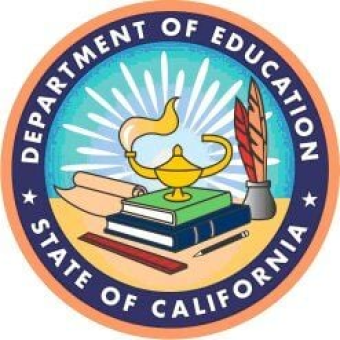Demonstrate Knowledge of Movement Skills, Patterns, and Strategies While Identifying the Impact of Associated Factors Upon Movement Performance
Ninth-grade students learn to use biomechanics to analyze and improve performance, such as leverage, force, inertia, rotary motion, opposition, and buoyancy. Students work on the skill-related fitness components (speed, power, agility, coordination, reaction time, and balance) to enhance their performance. Students use their learning of training and conditioning practices to improve skill acquisition and performance.
Understanding the three areas (biomechanics, skill-related fitness, and training and conditioning), along with the role of emotions, provides learners with the comprehensive knowledge for improving performance in aquatics, rhythms/dance, individual, and dual activities. On their path to becoming independent learners of movement skills, students improve their understanding of motor learning concepts. By the end of ninth grade, students can create practice plans for improving their own performance in aquatics, rhythms/dance, and individual and dual activities. These practice plans are based on each student’s strengths and weaknesses as identified through feedback from proprioception, from others, and from the performance of complex movement activities. Feedback is most effective when it is specific and positive or specific and corrective.
Big Idea Success Criteria
The categories and their related standards below unpack the success criteria of this big idea.
- 1.3 Identify, explain, and apply the skill-related components of balance, reaction time, agility, coordination, explosive power, and speed that enhance performance levels in aquatic rhythms/dance, individual and dual activities.
- 1.7 Analyze and evaluate feedback from proprioception, from others, and from the performance of complex motor (movement) activities to improve performance in aquatic rhythms/dance, individual and dual activities.
- 1.8 Analyze and explain which training and conditioning practices have the greatest impact on skill acquisition and performance in aquatic rhythms/dance, individual and dual activities.
- 1.9 Create or modify practice/training plans based on evaluative feedback of skill acquisition and performance in aquatic rhythms/dance, individual and dual activities.
- 1.4 Explain and demonstrate advanced offensive, defensive, and transition strategies in aquatic and individual and dual activities.
- 1.10 Analyze situations and determine appropriate strategies for improved performance in aquatic, rhythms/dance, and individual and dual activities.
- 1.11 Assess the effect/outcome of a particular performance strategy in aquatic, rhythms/dance, and individual and dual activities.
- 1.5 Explain the use of the principles of biomechanics (leverage, force, inertia, rotary motion, opposition, and buoyancy); apply the principles to achieve advanced performance in aquatic, rhythms/dance, individual and dual activities; and evaluate the performance based on the use of the principles.
- 1.6 Examine the physical, emotional, cognitive, and scientific factors that affect performance and explain the relationship based on those factors.
Alternative Means of Expression
This big idea does not have created or curated examples of alternative means of expression due to the project scope and timeline. If you have example options you would like to share with the initiative team, please use the BYOT option.
Sample Coursework
Bring Your Own Task (BYOT)
A Call to IEP Teams
We want students’ IEP team members to share their ideas regarding viable alternative means of expression pertaining to this big idea for students with disabilities, including those eligible for the CAA, these teams serve. IEP teams can define viable alternative means of expression for an individual student with an IEP, as long as these mediums meet the local requirements of the coursework.
A Call to Content-based Educators
In addition to IEP teams, we know secondary teachers and district curriculum leads have a wealth of experience and ideas related to innovative ways to assess students’ understanding of this content. We are interested in sample alternative means of expression this community sees as viable assessments of this big idea.
Please use the entry boxes below to share these ideas.
Important Note —These assessment tools will not be shared outside the review of the initiative team and will remain the intellectual property of the users who have made this submission. Furthermore, feedback or comments from the initiative team will not be given to uploaded content, nor does uploading materials imply that the alternative means of expression strategy is a viable option for this big idea.
"*" indicates required fields

